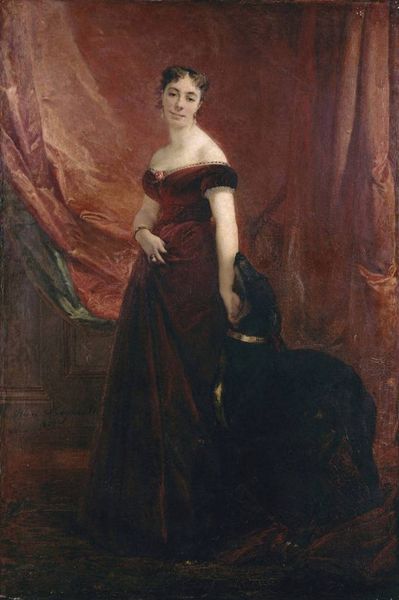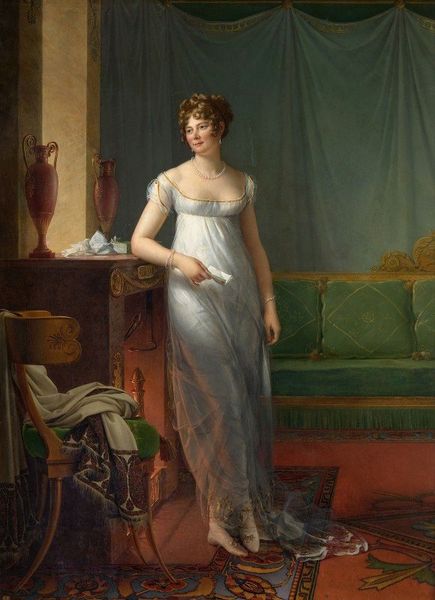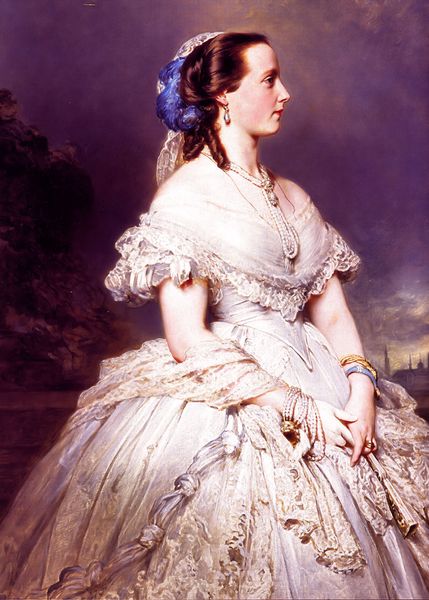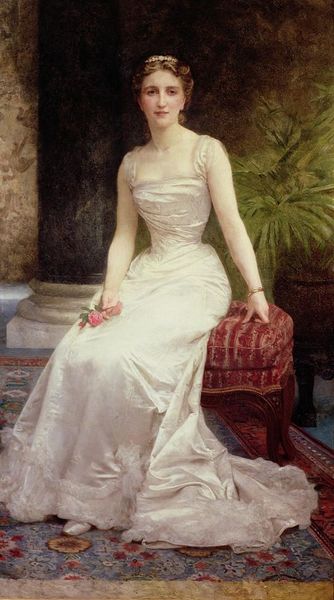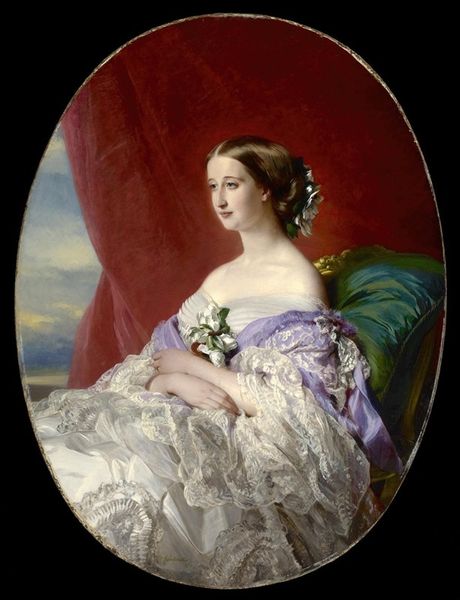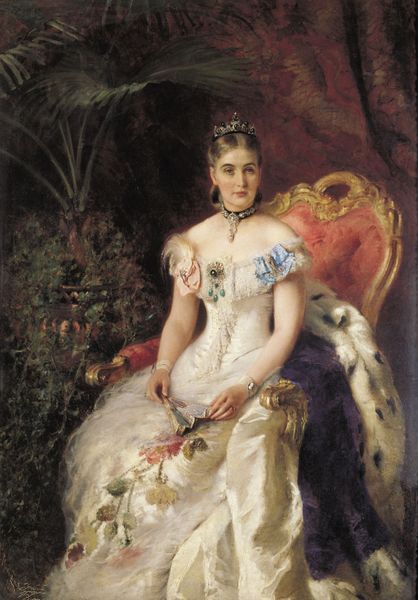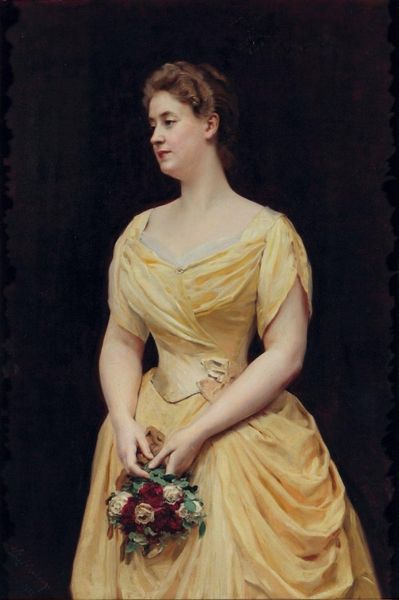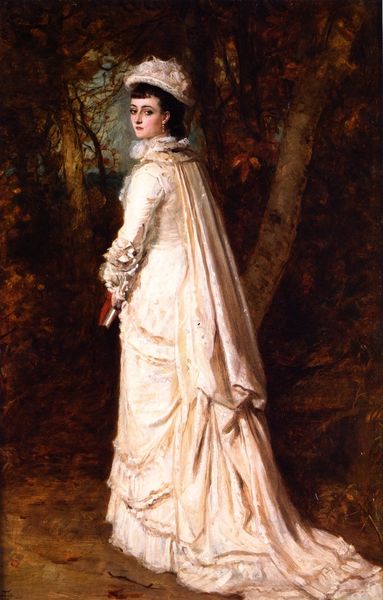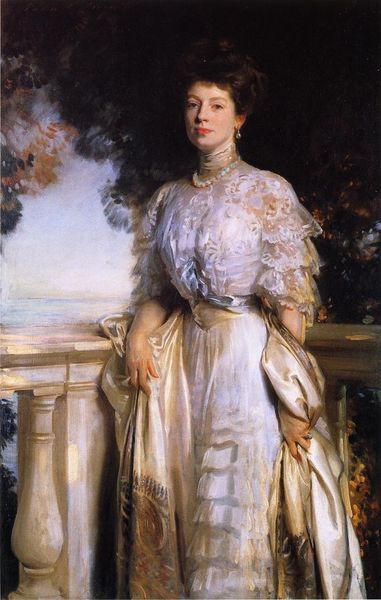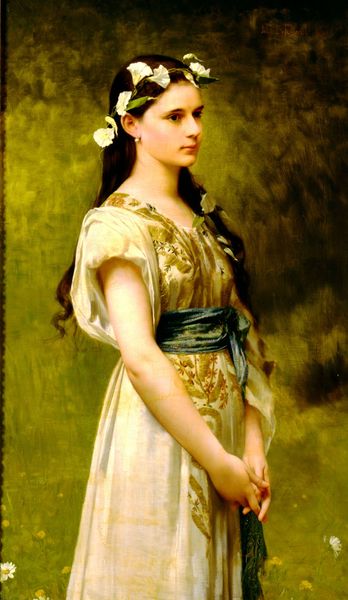
painting, oil-paint
#
portrait
#
gouache
#
painting
#
oil-paint
#
landscape
#
romanticism
#
history-painting
#
academic-art
Dimensions: 214 x 134 cm
Copyright: Public domain
Curator: Upon initial viewing, I'm immediately struck by the somber, contemplative mood this painting evokes. Editor: I agree. Here we see Antoine-Jean Gros’ “Portrait of Christine Boyer,” completed around 1800. It offers more than just a likeness; it suggests something about Christine’s position within Napoleonic society. Curator: I see what you mean. The Romantic landscape surrounding Christine emphasizes an idealized and symbolic notion of womanhood, but notice how Gros uses a restricted color palette – the stark whites of her dress and muted colors of the setting push her into the foreground. There's such a sophisticated interplay of textures! Editor: Absolutely. The landscape is there not as a landscape itself, but to contextualize her persona. Christine Boyer was, notably, Lucien Bonaparte’s first wife, placing her within a powerful, if volatile, political family. Her relatively simple attire seems at odds with her social status. Curator: That's quite perceptive. Is it perhaps intended to communicate a sort of unaffected grace, setting her apart from the more ostentatious displays of wealth common at the time? And even if her garments appear understated, her poise is certainly undeniable; the gesture of crossing her arms almost feels staged. Editor: It's interesting how the Romantics deployed portraits as instruments of both power and sentimentality. While she occupies a very real place in the history of the Bonaparte family, her downcast expression tells an altogether human story. It pulls against what one might anticipate given the history of academic portraiture during this period. Curator: Indeed, her gaze and the gentle melancholic air contrast the visual grandeur we often associate with depictions of historical figures, a touch which underscores the shift toward emotion within the Romantic era. I feel invited into the experience of womanhood during a tumultuous historical period. Editor: The portrait allows an insightful interpretation regarding personal expression set against a public life, revealing both its restrictions and its creative adaptations. Curator: And its emphasis on pure emotion as beauty – really fascinating. Editor: Yes, the piece certainly adds to our understanding of both art and its social influences during that pivotal moment in history.
Comments
No comments
Be the first to comment and join the conversation on the ultimate creative platform.
